The world’s largest amphibian sounds like a work of fiction: virtually unchanged since the time of the dinosaurs, and reportedly growing as long as a man, the Chinese Giant Salamander (Andrias davidianus) is clinging to survival in the wild in a few fast-flowing rivers scattered across the highlands of China.
Meanwhile, the aquaculture industry is breeding the animal in large numbers in captivity for the gourmet food market. The Chinese Giant Salamander is a fully aquatic amphibian that grows to a maximum length of 1.8 meters (almost 6 feet).
More typically measuring about 1 meter (3.28 feet), it breathes through its mottled brown, rough, wrinkled skin, and has a broad, flat head, and tiny eyes.
Poor eyesight means that this large animal relies heavily on smell, touch, and the sensing of vibrations — via special sensory nodes in its skin — to catch prey of fish, frogs, and insects.
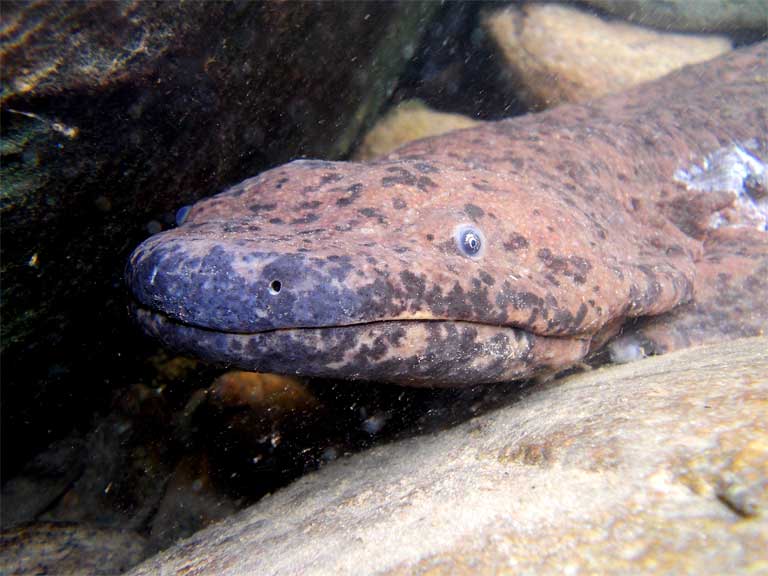
Females lay strings of hundreds of eggs in dens, or underwater cavities, which are then guarded by male den masters until the eggs hatch a couple of months later. Measuring just 3 centimeters (1.18 inches) long when they emerge from the egg, the salamanders grow slowly to their adult size, reaching sexual maturity when they are about 15 years old.
An ancient animal disappearing from wild rivers
Part of a lineage stretching back 170 million years, these ancient creatures are “living fossils” now at risk of extinction in the wild due to a deadly combination of over-exploitation, disease, and habitat loss.
Long generation times make recovery difficult, and a catastrophic population decline of more than 80% in just a few decades has resulted in the species being classified as Critically Endangered by the IUCN. The Zoological Society of London’s EDGE (Evolutionarily Distinct and Globally Endangered) project has placed the salamander at number two on its amphibian risk list.

The perilous status of the species in the wild stands in sharp contrast to the millions of captive Chinese Giant Salamanders that abound in the country: a highly valued dietary delicacy, the salamanders are farmed on an industrial scale.
“Chinese Giant Salamanders have been in decline for decades but the recent growth of the farming industry and the knock-on impacts this creates means we have now reached a critical point in terms of the persistence of this species in the wild,” Ben Tapley, head of the reptile team at the Zoological Society of London (ZSL), told mongabay.com.
To boost conservation action on the species, the Chinese Giant Salamander Conservation project was launched in 2012. This ZSL-led effort is being conducted in conjunction with the Chinese government and other Chinese institutions including the Kunming Institute of Zoology, Shaanxi Normal University, and Guiyang University.
The multi-faceted project combines habitat surveys and genetic and pathogen sampling of wild salamanders, along with sampling at salamander farms, to investigate both the status of the species in the wild, and the effect that captive populations have on their wild counterparts. Raising awareness of the species within China and building national capacity for conservation are also key activities of the project.
An enigmatic, charismatic amphibian
Relatively little is known about the salamander — currently estimated to number fewer than 50,000 wild individuals. Its range once extended across much of southern and central China, but today is highly fragmented. To assess its current distribution, the project is focusing on key areas which have the best chance of being home to the species.

“The Chinese Giant Salamander [CGS] team developed a habitat niche model for the CGS, and from this selected 100 sites representing optimal habitats for the species,” Tapley explained. “At each of the 100 sites, we carry out ecological surveys where a variety of methods including trapping, rock turning, nocturnal snorkelling and spotlighting surveys are used to locate wild salamanders. Any salamanders that are caught are marked, weighed, measured — with genetic and pathogen samples also being taken.”
The surveys will allow the team to map the salamander’s current range distribution, a critical step towards designing effective protected areas to conserve the species in the wild.
Tapley has been interested in amphibians since childhood, and the project offers him the opportunity to work with a species that has long captured his imagination. “Chinese Giant Salamanders have always fascinated me,” he said. “I’m unashamedly in awe of these animals, and the fact they’ve effectively remained unchanged in evolutionary terms since the time of the dinosaurs.”
The species has also captured the imagination of the Chinese people throughout history. “The species is culturally significant,” Tapley said. “It’s actually believed that the Taoist yin and yang symbol was inspired by the image of two entwined giant salamanders and the species has appeared in ancient Chinese artworks.”
The team’s survey — the largest in China’s conservation history — has revealed far fewer salamanders than expected. “The biggest surprise for me has been just how few wild salamanders we’ve encountered to date,” Tapley said. “I’ve worked with a number of Critically Endangered amphibians in the past, but in most cases we’ve been able to locate the target species with relative ease. The CGS, by contrast, can be surprisingly elusive for a creature of its size.”

For Tapley, a highlight of working on the project was his first encounter with a wild salamander. “My most memorable moment was coming face-to-face with a wild CGS for the first time. We’d been conducting surveys at a beautiful site in Fanjingshan National Nature Reserve but had failed to find any salamanders during any of our previous visits. On this particular morning, we were all feeling pretty cold, tired and not hugely optimistic. This was until we checked our humane traps and, to our delight, found that the last one contained an adult male CGS! The moment was made even more special because many of our Chinese team members had never seen a wild CGS before, either, despite countless hours spent searching. Moments like this make all the hard work extremely worthwhile and seeing this amazing creature in the wild made us all more determined to conserve this fantastic species.
Becky Shu Chen, project manager of the Chinese Giant Salamander project, revealed just how few and far between their encounters with the species have been. “Surprisingly, we only detected [the] presence of wild CGS in 5 sites out of 90 survey sites so far.”
“Our experience makes it clear that populations, where they still exist, are often at extremely low density and that even where individuals persist, the population may be functionally extinct,” Tapley commented.
China’s hunger for giant salamanders
Habitat loss is one factor in the species’ decline. “China is developing at such a rate that habitats, especially river systems, are being dramatically altered through sedimentation, dam construction and road construction. CGS have very specific habitat requirements and the extent of the remaining suitable habitat for the species is shrinking constantly,” Tapley explained.

But it is the salamander’s exploitation for food that is the critical issue at present, with wild populations plundered to keep farm populations viable. Although a self-sustaining farmed population could be beneficial for the species, current practices rely on wild individuals to boost farm stocks. The industry is still in its infancy, and farms have struggled to successfully maintain captive populations, resulting in the vast majority of breeding individuals being either wild-caught, or first generation offspring of wild-caught animals. As things stand, therefore, the extinction of the salamander in the wild would also spell the end of the farming industry. But even if a self-sustaining farmed population could be maintained, the loss of these unique animals from the wild would be a tragedy for Chinese, and global, biodiversity. And over time, selective breeding on farms could change the salamander’s physical and behavioral characteristics so that they differed from those of their wild ancestors.

Furthermore, diseases originating on farms can spread to wild populations, and well-intentioned releases from farms to supposedly boost wild populations are rife with problems. Released animals may carry disease, and may also be more closely related to populations that exist far from the site of their release. This can lead to a loss of genetic diversity within the species as a whole, as individuals from different populations are brought together. A genetically diverse population has a good chance of responding to future events such as climate change that may affect the species’ survival; genetic homogenization reduces these chances.
“The scale of the farming industry in China is staggering — a 2011 census purely looking at the licensed farms in Shaanxi Province showed that there were 2.6 million CGS on farms, and the industry has expanded massively since then,” said Tapley. “Diseases such as ranavirus are a problem on some of the farms, and effluent from these facilities often flows directly into neighboring river systems.”
“The biggest challenge to the conservation of the CGS is the sustainability of the farming industry. We recognise that it’s an important economic activity for many Chinese, but there are many changes that could be made to minimise the industry’s impact on remaining wild salamanders,” Tapley said. “Farmed and wild CGS populations should be kept completely separate and biosecurity measures improved.”
Outreach and education key
Reaching out to farms to develop more sustainable practices is part of a wide range of communication and outreach activities that Chen has been leading. “We have been working closely with communities, especially in Fanjingshan National Nature Reserve in Guizhou Province. We organized stakeholder meetings to engage farms for more sustainable management, and surveyed communities for their willingness to be involved in the development of wildlife ecotourism in Fanjingshan,” said Chen.

“We have also been successfully promoting the plight of this species [with a] top-table discussion with the royalty,” of Great Britain. Prince William was introduced to the project on a visit to China earlier this year, Chen added. The project has also conducted vigorous “on-the-ground conservation campaigns in rural marginal communities.”
An educational campaign called Go for Salamander has been developed, and a children’s book published, with 5,000 copies distributed to schools in Guizhou province.
Outreach events have spread the message even further. “Local campaigns in Guizhou have reached more than 1,000 people, and joint campaigns with museums and science centers in Yunnan and Guangxi province have reached an estimated 10,000 people,” Chen said. “We did pre- and post-campaign evaluations, and the results showed a significant increase of people’s knowledge about CGS and more positive attitudes to its conservation.”

The survival of the Chinese Giant Salamander depends on a concerted effort at the national level to build capacity for conserving this unique species. “To date, we have trained over 80 people in our survey methodologies, and have also supported Chinese conservation biologists through our EDGE Fellowship program,” Tapley said. “The program aims to create a new global network of in-country conservationists trained in cutting-edge wildlife management techniques and equipped to design and implement projects for local EDGE species.”
It’s not just farmers, conservationists, and policymakers who have valuable roles to play: those consuming salamander meat can influence the farming industry. ”There’s a growing trend towards more ethical consumption within China, and one of the best things consumers can do is ensure they’re only buying responsibly-sourced and certified-sustainable CGS meat and other products,” Tapley explained. “From a more global perspective, greater financial support for CGS conservation efforts will help ramp-up efforts on the ground.”
Tapley is optimistic about the salamander’s future, seeing viable solutions to offset the factors threatening its survival. “Even though the current situation is still dire, we’re now in a position where we can work with partners to secure a more sustainable future for the species,” he said. “The farming industry is important, but can be made more sustainable; management of protected areas can be improved; laws can be more strongly enforced; and habitats can be restored. We’ve already succeeded in reaching out to people and attracting them to our cause, and I firmly believe that where there’s a will to protect this species, there’s a way.”
China has the opportunity to not only embrace this charismatic and emblematic species, but to reap the benefits that conserving it would bring. “The CGS has been dubbed the ‘fresh water panda’ and as the country’s most iconic aquatic species, it should be recognised more widely as a national treasure,” Tapley concluded. “If we protect the salamanders and the habitats in which they occur, we can also protect the myriad of other species living in these rich ecosystems. Watershed protection has a huge direct benefit to humans. It is important that we recognise that what is good for the CGS is often good for people, too!”

This article was first published by Mongabay.com on 14 Nov 2015.
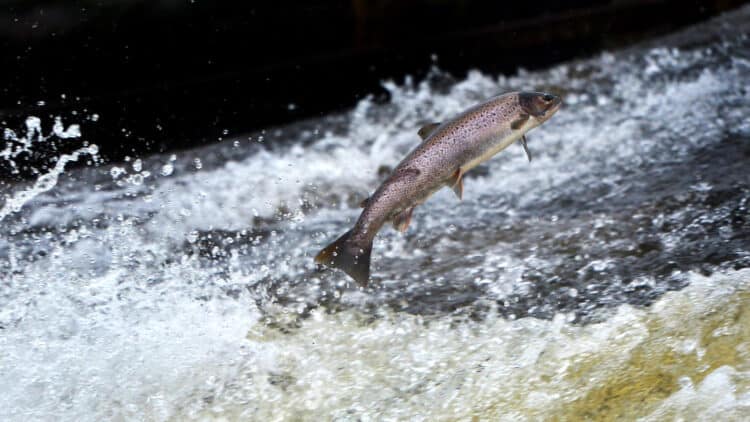
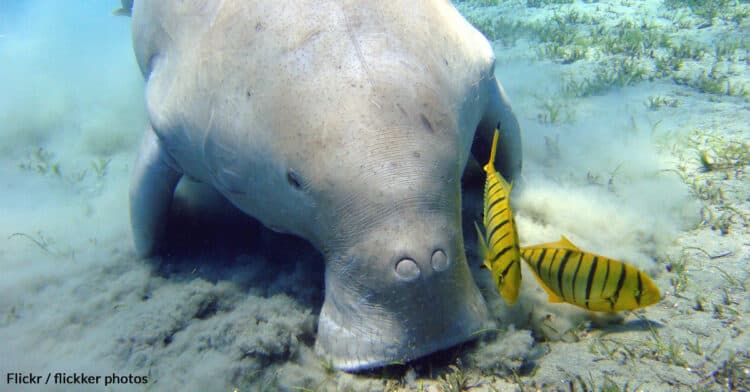
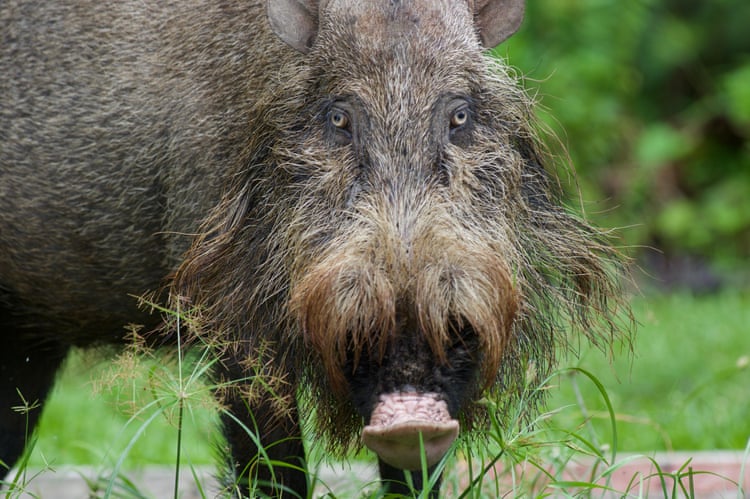
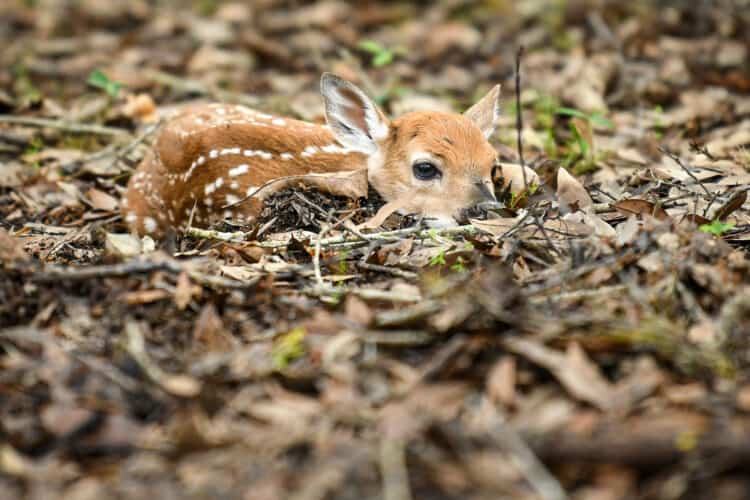

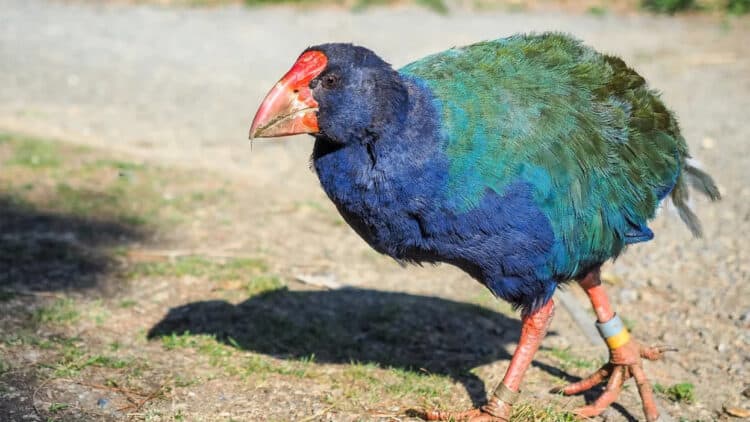
Leave a Reply